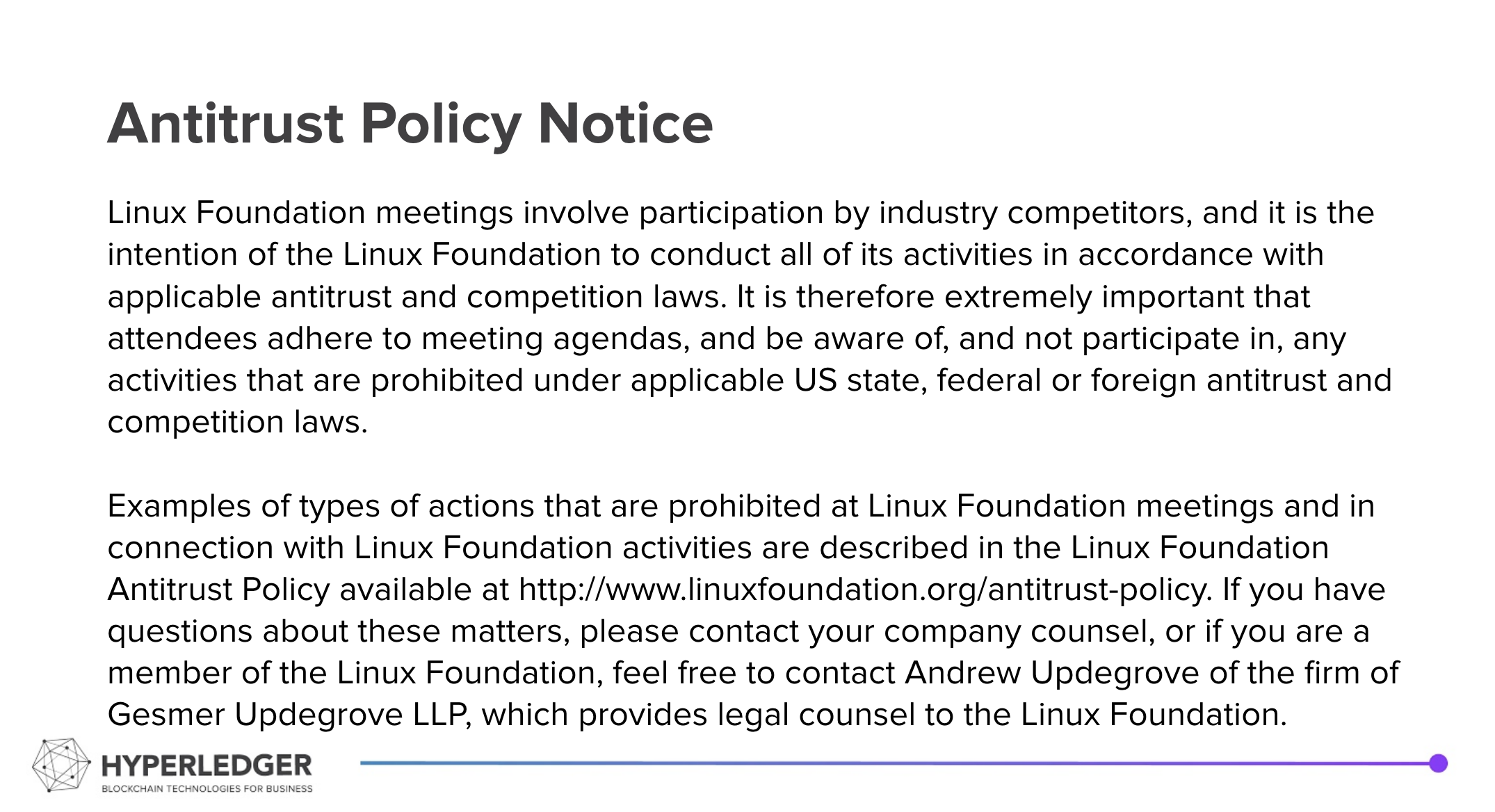Summary
- IIW Update
- PRs and Backwards Compatibility
- Latest on AnonCreds in W3C VC Standard Data Model format
- Open Issues
- Open Discussion
Recording of Call: To Be Added
Notices:
This specification creating group operates under the Linux Foundation Community Specification License v1.0.
Hyperledger is committed to creating a safe and welcoming community for all. For more information please visit the Hyperledger Code of Conduct. |
|---|
Meeting Attendees
Stephen Curran (BC Gov / Cloud Compass Computing Inc.) <swcurran@cloudcompass.ca>
Lance Byrd (RootsID) <lance.byrd@rootsid.com>
Alex Andrei(RootsID) <alex.andrei@rootsid.com>
Christian Bormann (Robert Bosch GmbH) <christiancarl.bormann@de.bosch.com>
Rodolfo Miranda (RootsID)<rodolfo.miranda@rootsid.com>
Matteo Midena (Monokee) <matteo.midena@monokee.com>
Related Repositories:
- AnonCreds Specification: https://hyperledger.github.io/anoncreds-spec/
- AnonCreds Methods Registry: https://hyperledger.github.io/anoncreds-methods-registry
- AnonCreds Rust Open Source Code: https://github.com/hyperledger/anoncreds-rs
Meeting Preliminaries:
- Welcome and Introductions
- Announcements:
- RootsID is working on deploying AnonCreds on the Cardano Network
- Updates the Agenda
Agenda
- IIW Update
- Session on Hyperledger AnonCreds
- Discussions about JSON-LD usage
- Lots of discussions of supporting AnonCreds in "other formats" – e.g. OWF, OID4VCs
- BBS+ Predicates work that is happening - Dan Yamamoto
- Aside: Mike Lodder presentation
- Backwards Compatibility
- PRs in (#82, #105) that seem to change public data structures – ones that are handled outside of AnonCreds and/or by two or more participants (issuer, holder, verifier)
- We want to retain compatibility with existing data – credentials that have been issued and the published AnonCreds objects on which they rely.
- That extends to business logic – e.g. the handling of the objects not just by AnonCreds, AnonCreds Methods and Aries Frameworks, but also by business applications built on Aries.
- Suggestion:
- Include in the specification a statement about backward compatibility
- Formalize what data structures will be expected by AnonCreds
- As needed support sending and receiving data in "old" and "new" formats, but (for now) always sending "old" formats.
- Creating/sharing AnonCreds verifiable credential and presentation objects in W3C VC Data Model format
- Repository with code: andrewwhitehead/anoncreds-w3c-mapping
- Signing an AnonCreds VC with an LDSignature based on a static context
- Open PRs Review, Open Issues Review
- Open Discussion
Future Calls
- None pending
To Dos:
- Ankur to add paragraph about philosophy of the AnonCreds API, styles
- Review the Issuing and Presentation sections to exclude Legacy Indy impacts, and to formalize the Abstract API for writing/reading published objects
- Cred Def Generation + PRIVATE_CRED_DEF -- non revocation, and plus revocation
- Revocation data elements -- definition
- Normative/Non-normative references
- Collect from documents mentioned below (under action items) and from previous meeting
Action items
- Request from Stephen Curran -- I'd like to go through the
presentationsection of the spec to convert the specific implementation calls (e.g.indy_prover_...and the like) into content to be more about the data objects passed into AnonCreds/returned from AnonCreds for processing events. - Suggestion made and supported that the group request to provide a presentation about AnonCreds to the W3C VC Working Group about the formatting of AnonCreds verifiable credential and presentation in W3C format and the processing implied.
- Issue -- should "encoded" generation be handled by the Issuer or within AnonCreds?
- Formalize the encoding in the specification
- Transition to "encoding in AnonCreds" ASAP
- Links to be referenced in the spec and used where needed:
- From Artur Philipp : Issue about raw/encoded values used in AnonCreds https://jira.hyperledger.org/browse/IS-786
- Latex in Spec-Up / (Re)Discovery of AnonCreds Protocols paper from Mike Lodder, Brent Zundel. There is a full latex version of the document -- that document uses images to get the calculations into the text.

